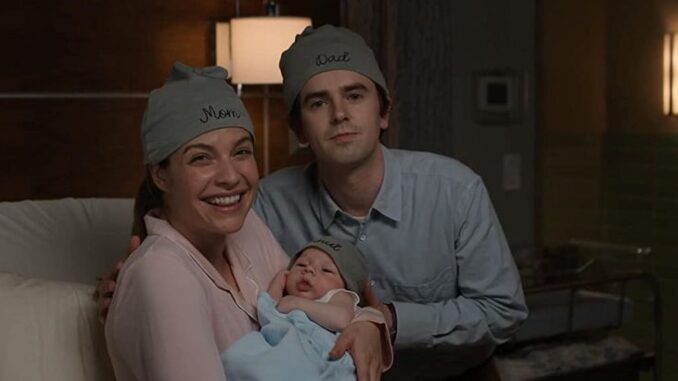
The Good Doctor has always walked a delicate tightrope between emotional storytelling and high-stakes medical drama. Few episodes had the weight of expectations that the Season 2 finale, “Trampoline,” carried. After a season filled with tension, growth, and conflict—particularly between Dr. Shaun Murphy and Dr. Jackson Han—fans anticipated a powerful conclusion. What they received instead was a finale that felt, to many, rushed and emotionally undercooked. While “Trampoline” had moments of promise, the resolution of critical arcs came too quickly, leaving viewers wishing for a more nuanced and impactful sendoff to one of the show’s most turbulent chapters.
At the heart of the finale was Shaun’s demotion by Dr. Han, a storyline that had been building in intensity for several episodes. Dr. Han’s belief that Shaun’s autism made him unfit for surgery created a professional roadblock that deeply challenged Shaun’s identity and purpose. This conflict wasn’t just about one position—it symbolized the larger battle Shaun constantly faces: proving his competence in a world that doubts him. Given how personal and high-stakes the issue was, fans hoped for a thoughtful, emotional reckoning.
Instead, Shaun’s reinstatement was resolved with surprising ease. After saving a patient during an off-the-clock emergency and a brief moment of persuasion, Shaun was suddenly back on the surgical team. While it was gratifying to see Shaun vindicated, the emotional and narrative weight of the conflict wasn’t explored as fully as it could have been. Viewers who had invested in Shaun’s slow, sometimes painful journey toward self-acceptance and professional recognition were left feeling like the climax had been diluted. The show had an opportunity to unpack the complexity of Shaun’s struggle against bias and workplace politics—but “Trampoline” chose expediency over exploration.
Compounding this sense of disappointment was the episode’s attempt to juggle multiple storylines simultaneously. Shaun’s professional comeback competed for screen time with his personal growth, including a subplot about him visiting a bar and getting into a physical altercation. While the title “Trampoline” alluded to Shaun’s metaphorical bounce back from adversity, the metaphor didn’t quite land. His bar encounter felt disconnected from the broader arc, and the emotional leap from that chaos to a moment of romantic courage—where Shaun asks Carly out—felt unearned. It was as if the episode wanted to tick boxes: drama, check; growth, check; romance, check—without giving each beat the space it needed to resonate.

The uneven pacing made the finale feel more like a patchwork of promising moments than a cohesive, satisfying conclusion. Relationships that had been evolving over the course of the season—like Shaun and Dr. Glassman’s mentorship, Claire’s grief over Dr. Melendez, and Park’s family struggles—were either briefly touched on or pushed to the sidelines. Fans expecting these subplots to be woven into Shaun’s arc or used to enrich the finale’s emotional depth found themselves disappointed.
What made this all the more frustrating is that The Good Doctor has proven its ability to craft deeply moving, character-driven finales. Season 1’s final episodes, which dealt with Shaun’s surgical heroism and Glassman’s cancer diagnosis, were tightly written and emotionally rich. The show has never been about big twists; its strength lies in the quiet, intimate moments that reveal who these characters truly are. “Trampoline” seemed to forget that lesson, opting instead for a more conventional structure that didn’t honor the emotional complexity of Shaun’s journey.
Of course, “Trampoline” wasn’t without its merits. Freddie Highmore, as always, delivered a compelling performance, capturing Shaun’s vulnerability and resilience with authenticity. The scene where he nervously asks Carly out, though rushed, still tugged at the heartstrings thanks to Highmore’s layered portrayal. Similarly, Dr. Glassman’s subplot provided a few tender moments that reminded viewers of the show’s emotional core. But these highlights were isolated flashes in an otherwise fragmented narrative.
Many fans and critics alike felt that the finale was a missed opportunity. By resolving Shaun’s conflict with Dr. Han so quickly, the show glossed over a chance to deeply explore themes of discrimination, autonomy, and professional validation. Rather than watching Shaun systematically prove his worth over time, viewers got a shortcut—a convenient rescue scenario that reinstated him with minimal fallout or reflection.
It’s worth noting that Daniel Dae Kim, who played Dr. Han and also serves as an executive producer, delivered a grounded and believable antagonist. His stance wasn’t cartoonishly villainous—it reflected a very real-world bias that those with disabilities often face in professional settings. The conflict between him and Shaun could have been the foundation for a powerful debate about inclusion in high-pressure careers. Unfortunately, the finale only skimmed the surface of that tension before wrapping it up.
